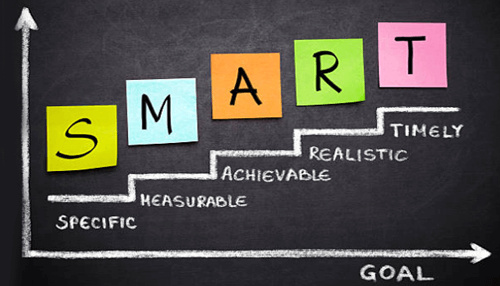Customers have rarely been put under the microscope as they are today. Behavioral marketing is a strategy that leverages consumer behavior data to create personalized marketing experiences.
Every action of theirs is closely tracked, reported, scrutinized, and analyzed, leading to predictability and forecasting.
Whether online or offline, their behavior is the subject of intense observation as they move through the store or website.
Marketers have traditionally focused on the famous 4P model: Product, Price, Promotion, and Placement.
It is company and product-focused and intended mainly to enhance the brand’s visibility and reach.
This meant that the company moved into the forefront, while the consumer remained in the background as a passive consumer of the message and the product/service.
While traditional methods remain the bulwark of marketing strategy, what’s changed is technology and the shift in focus from company and product to consumers and users.
Earlier, marketing messages were company/business-controlled and usually emerged from a single source. Today, the product is consumer/user-focused, hinges on their interests, needs, wants, and preferences, and it emerges from multiple sources.
Mapping the Consumer Journey
Purchasers show different types of responses such as programmed, simple, or routine responses (groceries, essentials), impulse buying, high-level, non-simple decision-making (expensive purchases such as property, vehicles), and limited decision-making (exploring new brands).
These responses are motivated by social, psychological, and personal factors.
The typical consumer’s purchasing process for non-simple buying decisions can be divided into several distinct stages:
1. Awareness: Recognition of the need and the desired conditions that can satisfy it.
2. Information-seeking: This could be searching memory/historical experiences or external sources such as personal connections (recommendations/references), marketing sources, etc. The final result would yield a set of possible alternatives.
3. Weighing the alternatives
4. Purchasing decision: The actual location, method of payment, logistics, etc. are now consolidated.
5. Purchase: This may occur after a certain lapse of time or not.
6. Post-purchase impact: Satisfaction, returns, remorse, reviews, responses, feedback, etc.
What Is Behavioral Marketing?
One of the key concepts in this new environment is behavioral marketing. This is an offshoot of the principles of behavioral segmentation, one of the cornerstones of market segmentation.
Surprisingly, only 33% of companies surveyed in one particular study reported that they used market segmentation because they depended exclusively on the traditional approach.
Demographic and geographical information provides insights into who your customers are, but without knowing what they do, this data would be ineffective.
This is where behavioral marketing comes in to fill the gaps.
How Is Behavior Measured?
Without diving too deeply into the tech aspects, online behavior can be observed, recorded, and measured accurately.
Data can be collected through:
- Navigation paths
- Session recordings
- Touch-sensitive heat maps
- User journey tracker and conversion funnel
- Action cohort-related behavior on the website
- IP address
- Location and GPS data
- Search Engine History
- Cookies
- Social media links
These methods and many others can be used to provide accurate data on user behavior. The results take the guesswork out of how users and visitors to your website respond, act, and advocate for your products and services.
The benefits of behavioral marketing can be almost immediately achieved and here too, there are 4Ps:
Performance:
When you track user behavior over an extended period, you can gauge the health and growth of your business and the efficacy of your website.
Prioritization:
Your customers can be segregated into high and low-value customers, frequent users, first-time visitors, loyal customers, repeat customers, etc. With behavioral marketing data, you can allocate the right amount of resources, time, budget, and effort to each.
Personalization:
Once you have enough data to create distinct user personas, you can deliver targeted and personalized marketing material to each. Studies show that more than 60% of customers report that they feel annoyed by generic marketing messages. 80% are more likely to do business with a company that provides personalized messages, while 90% report that they find personalized marketing experiences more appealing.
Prediction:
The ultimate goal of marketing strategy is to be able to predict and forecast future behaviors. Behavioral marketing helps businesses to make reasonably accurate predictions based on historical data.
Goals of Behavioral Marketing
The goal of all behavioral segmentation and marketing research is to evolve specific SMART goals (Specific, Measurable, Achievable, Realistic, and Time-bound). It is a process of reviewing existing and available data, blending it with new insights into customer behavior, and arriving at a new set of analytics and information.
Through this prism, you can truly connect with your target audience, and understand their requirements and the key drivers of behavior.
Understand the customer:
Through available data, business owners no longer need to consider the market as an amorphous monolith. Instead, you can almost “see” the individual customer, and understand their intentions, motivation, attitudes, behavior, needs/wants, preferences, etc. This helps to create an accurate typical persona to whom you can beam your marketing messages and be confident that they will respond in the way you expect them to.
Better Engagement:
With behavioral data, you increase your understanding of customer habits. This means that your marketing messages are targeted at the way they engage with specific products, the time, occasion, amount spent, etc. With access to this data, you can ramp up specific metrics such as clicks and rate of conversion.
Improved UX:
Studies show that more than 75% of customers are more likely to engage with a business that refers to them by name, provides a selection of items that would interest them, makes the purchasing journey smoother, gives personalized rewards and benefits, and understands the preferred payment methods. These factors become entrenched in the customer’s memory and contribute to a pleasant and memorable user experience.
Swift and Smooth Journey:
When the customer journey becomes easy with the help of customer journey mapping, efficient and swift, there are chances that the volume and frequency of engagement will increase. Brand recognition, loyalty, and recommendations on social media platforms may also be amplified.
New Products/Services:
Behavioral data helps businesses to understand the kinds of new products/services that are customer-centric. This leads to better growth and expansion of the business and helps it to reach wider and deeper new markets.




